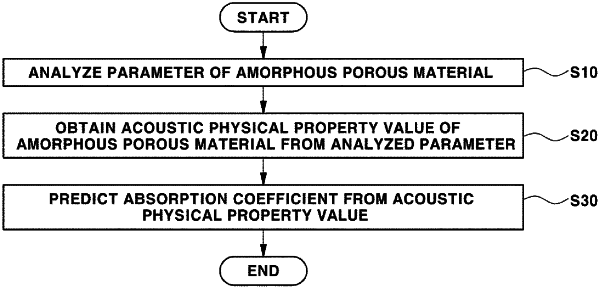| CPC B01D 39/1692 (2013.01) [G01N 23/046 (2013.01); G16C 20/30 (2019.02); G16C 60/00 (2019.02)] | 14 Claims |

|
1. A method for predicting physical properties of an amorphous porous material, comprising:
obtaining a parameter of an amorphous porous material; and
calculating an acoustic physical property value of the amorphous porous material from the obtained parameter,
wherein the parameter comprises one or more selected from the group consisting of an average pore radius (Rp), an average pore throat radius (Rt), an average bonding angle (θp-p) between neighboring pores, and a porous material skeleton thickness (Tf), and
wherein the acoustic physical property value comprises one or more selected from a group consisting of a porosity (ϕ), a tortuosity (α∝), a flow resistivity (σ), a thermal characteristic length (Λ′), and a viscous characteristic length (Λ).
|